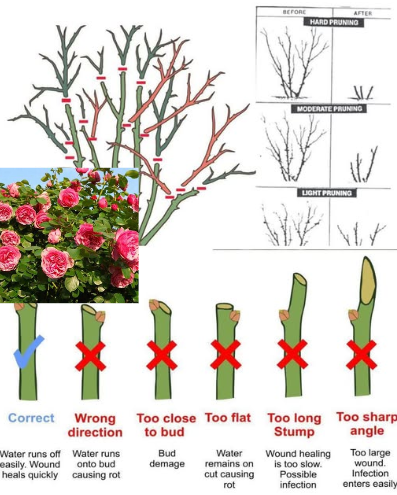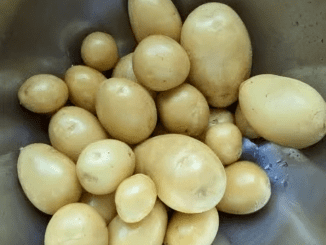
If you’ve ever walked past a blooming rose bush and felt a pang of envy, you’re not alone. Roses can be breathtaking—but only if they’re cared for properly. And guess what? One of the most important steps to unlocking their full beauty is knowing how and when to prune. It’s not about hacking randomly—it’s a simple process that, when done right, transforms scraggly shrubs into spectacular bloomers. So, grab your gloves and let’s get snipping.
Why Pruning Roses Is a Game-Changer
Think of pruning like giving your roses a fresh haircut. You’re not just trimming for looks; you’re shaping, strengthening, and invigorating the plant. Skipping this step can lead to weak growth, fewer flowers, and an open invitation for pests and disease.
Roses thrive when you guide them. When you cut back strategically, you’re telling the plant, “Hey, grow here, bloom big, and stay strong.” And it listens.
Best Time to Prune Roses: Timing Is Everything
So when’s the magic moment to prune? It depends on the type of rose and your climate, but here are the basics:
Late Winter or Early Spring Pruning
For most types of roses, the ideal time to prune is late winter or very early spring—right before the plant exits dormancy. Look for swelling buds on the canes—that’s your sign the rose is waking up. Get in there before leaves start unfurling so your cuts guide the new growth efficiently.
Roses hate getting pruned too early in freezing temps, so don’t rush. But don’t wait until new growth is everywhere either. Balance is key.
Climbing Roses Need a Different Schedule
Now, if you’ve got climbing roses, hold your shears. These beauties bloom on last year’s wood, so pruning them in early spring can mean chopping off all your potential blooms. Instead, prune climbing roses right after their big bloom in summer. That way, you’re encouraging fresh, flower-friendly growth without killing the show.
Mid-Summer Maintenance Pruning
Pruning isn’t just a once-a-year deal. During the growing season, make it a habit to remove:
- Dead or diseased wood that drains energy
- Crossing branches that can cause wounds and fungal infections
- Spent blooms to encourage repeat flowering
This quick clean-up keeps your plant healthy and blooming like it means it.
Video : Pruning Roses for Beginners: Easy Step-by-Step Guide (UK)
Step-by-Step: How to Prune Roses Like a Pro
Now for the good stuff—how to actually do it without wrecking your bush.
1. Strip Away Old Leaves
Start by removing any remaining leaves from the plant. This clears the view of the bush’s structure and makes pests or disease easier to spot.
2. Remove Dead or Damaged Wood
Next, cut out any canes that are clearly dead, blackened, or shriveled. Cut them back to the point where the wood is green and healthy. If it’s brown all the way down, remove it entirely.
3. Open Up the Center
Roses hate being cramped. Prune away inward-facing branches and any that cross over each other. Your goal is to create an open, vase-like shape that lets sunlight and air reach every part of the plant. This helps prevent fungus and rot.
4. Say Goodbye to Skinny Stems
If it’s thinner than a pencil, snip it. Thin growth won’t produce strong blooms and only saps energy from the plant. Keep the canes that are thick, healthy, and ready to support a heavy flower head.
5. Make the Perfect Cut
For the remaining healthy canes, make your cuts just above an outward-facing bud. Always cut at a 45-degree angle, sloping away from the bud. This encourages the new growth to expand outward instead of cluttering the center.
6. Seal the Deal
Use pruning sealer or white glue to seal fresh cuts, especially larger ones. This prevents disease and keeps boring insects out—literally and figuratively.
7. Clean Up Like You Mean It
Don’t leave those trimmings lying around. Disease and pests love that stuff. Rake it all up and dispose of it properly. And don’t forget to clean your tools with alcohol or a bleach solution. Your next rose bush will thank you.
8. Feed the Recovery
After a big prune, your roses are hungry. Feed them with a balanced fertilizer or one designed specifically for roses. This gives them the energy they need to produce new shoots and, eventually, a parade of perfect blooms.
Pro Tips for Even Better Results
Want to take your rose pruning to the next level? Keep these nuggets of wisdom in mind:
- Use sharp, clean tools to avoid crushing the canes or spreading disease.
- Label your roses, especially if you have different varieties with different needs.
- Observe regularly. Catching diseases early makes pruning easier and more effective.
- Don’t fear the cut. Roses are tough. A bold prune often results in bigger, better blooms.
Tailor Your Technique to the Rose Type
Not all roses are created equal. Hybrid teas, floribundas, shrub roses, and climbers all have their quirks. Learn what each variety likes, and adjust accordingly. For example:
- Shrub roses can be pruned more freely for shape.
- Miniature roses often benefit from frequent light pruning.
- Ramblers might not need much pruning at all—just control the chaos.
Video : How to prune a Rose bush to encourage more blooms
Conclusion: Prune Smart, Bloom Big
Pruning roses doesn’t have to be intimidating. With the right timing and a clear approach, you can turn a scraggly, wild bush into a vibrant explosion of color. Whether you’re shaping your hybrid tea or taming your climber, each cut is a conversation with the plant—guiding it, supporting it, and setting it up for success.
So get out there, sharpen your shears, and give your roses the trim they deserve. Your garden—and your senses—will be blooming with gratitude.


